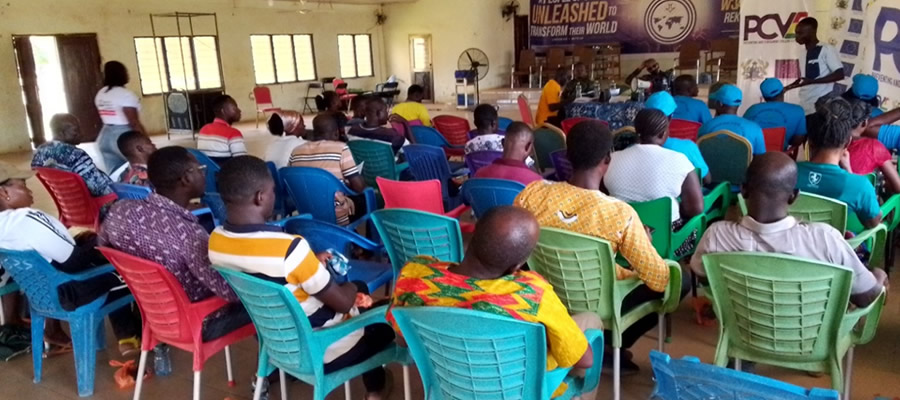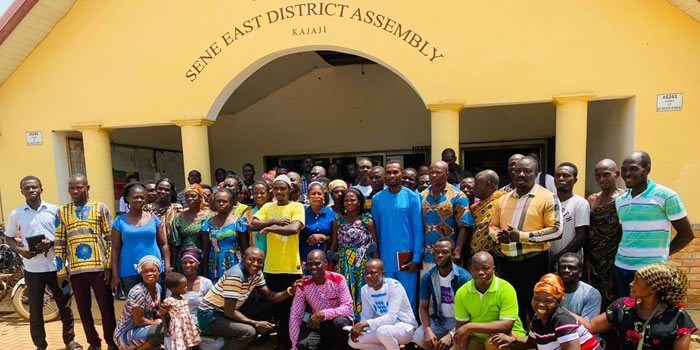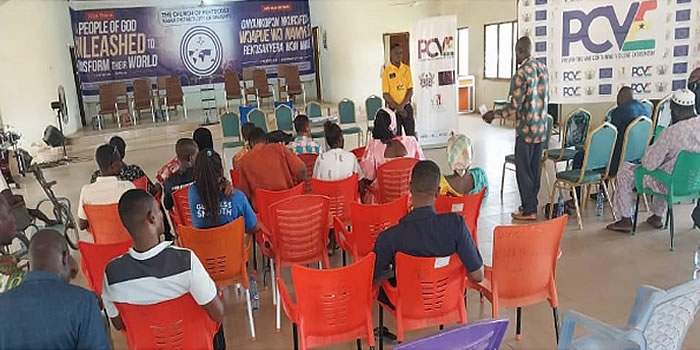

Vulnerability
Introduction
In recent times, disability has become developmental issues in the country. People with Disabilities (PWDs) face a wide range of life challenges; disabilities of whatever form or type can limit an individual’s ability to function to his or her full potential. The 1992 constitution of the Republic of Ghana provides for the guarantee of fundamental human rights of all persons including people with disabilities. Decision makers and developmental actors, therefore, need to know and understand the characteristics of persons with disability to enable them formulate laws and policies and develop programmes and projects to ensure their proper integration into the socio-economic development of the country. This chapter presents information on disability using the 2010 population and housing census data.
Population with disability
Table 6.1 presents population with disability for the district by sex, type and locality of residence. The table shows that 1,170 persons in the district are with some form of disability, which constitutes almost two percent (1.9%) of the district’s population. There is virtually no difference between male and female proportions (1.9% and 2.0% respectively. The major forms or types of disability identified in the district are sight, hearing, speech, and physical. The rest include intellectual, and emotional.
Type of Disability
Figure 6.1 shows the types of disability prevalent in the district, namely, sight, hearing, speech, physical, intellectual, emotional and other forms of disability. Generally, sight disability is the most prevalent which constitutes 36 percent of the population in the district, followed by physical disability (28.6%) and hearing (25.4%) with intellectual disability (15.6%) being the lowest.
The figure further indicates that the prevalence of the types of disabilities among the sexes follows a similar pattern as the general population. However, there are slight differences between them in terms of magnitude. For example, female prevalence rates are higher than those of males in sight, hearing and emotional disabilities whiles males dominate in speech and intellectual disabilities.
Disability and Economic Activity
Table 6.2 shows population 15 years and older with disability by economic activity status and sex. The table show that, the total population of 898 persons is living with disability of different kinds. Of the disabled population, an impressive 71.2 percent are employed compared with 83.7 percent of those not disabled. Only 0.9 percent of the disabled are unemployed and as much as 28.0 percent and economically not active.
Within the different categories of the disabled very large majorities are employed, ranging from 55.9 percent among the physically disabled to 75.2 percent among those with sight disability. Among those with sight disability and the intellectually disabled no one is actually unemployed but rather a sizable proportion are economically not active (35.1% for the latter and 24.8% for the former). The highest unemployment rate is found among the physically disabled (1.6%) followed by those with speech and emotional disabilities (0.6% each). In general those who are physically disabled constitute the highest proportion (42.5%) of all the disabled who not economically active.
There are some gender differentials. Males who are physically disabled are much more likely to be employed than their female counterparts (77.1% versus 65.2%). On the other hand, the females with disabilities are more likely to be economically not active than their male counterparts (34.2% versus 21.8%). In all the categories of disability among the males those who are employed are in the majority, ranging from 63.8 percent among the physically disabled to 80.7 percent among those with sight disability. In the case of the females, however, the employed are in the majority in all the categories except those with physical disability in which only 47.6 percent are employed. Among the males nobody is unemployed among those with sight, hearing and speech disabilities and the same applies to those with sight, intellectual and emotional disabilities among the females. The largest proportion of the economically not active is found among the females with physical disability followed by those with intellectual disability (34.0%) hearing disability (32.0%), and sight disability (30.1%).
Disability, Education and literacy
Table 6.3 presents information on population 3 years and older by disability type and level of education. There are 54,153 respondents 3 years and older in the District out of which 1,114 are with disability. Out of the total population with disability 602 never attended school, 387 have attained basic education, and 79 attained Sec/SHS and higher education. Those with sight impairment, 220 (52.6%) never attended school, 34.4 percent have basic education and 47
10.8 percent has attended Secondary/SHS and higher level. Emotional impairment has the highest proportion (44.2%) of persons with basic education.
Date Created : 11/20/2017 2:43:31 AM











 facebook
facebook
 twitter
twitter
 Youtube
Youtube
 +233 593 831 280
+233 593 831 280 0800 430 430
0800 430 430 GPS: GE-231-4383
GPS: GE-231-4383 info@ghanadistricts.com
info@ghanadistricts.com Box GP1044, Accra, Ghana
Box GP1044, Accra, Ghana